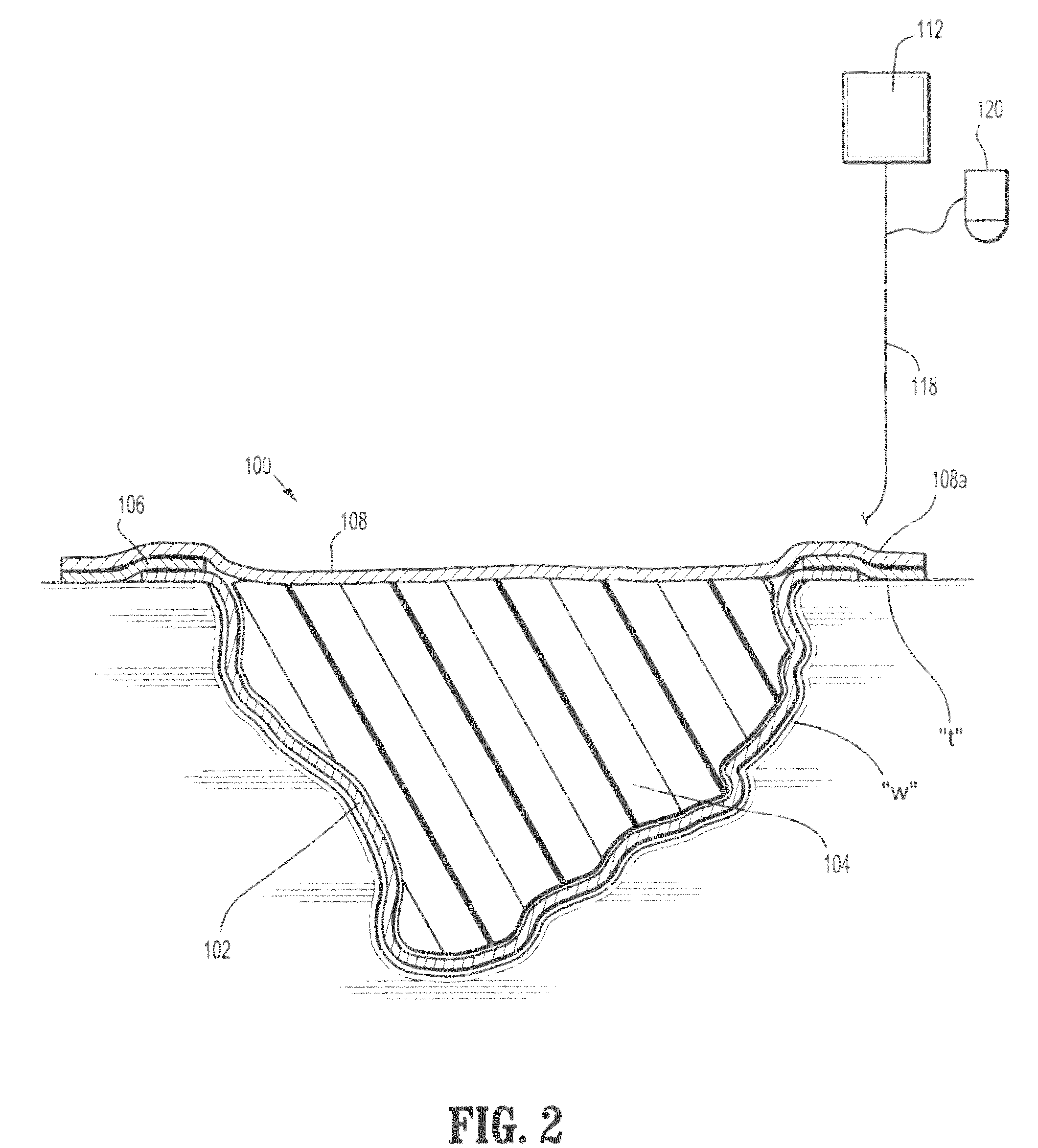Subatmospheric pressure wound therapy dressing
a subatmospheric pressure and wound technology, applied in the field of subatmospheric pressure wound therapy dressings and wound dressings, can solve the problems of difficult closure, less able to close the wound naturally, and less able to successfully close the wound
- Summary
- Abstract
- Description
- Claims
- Application Information
AI Technical Summary
Benefits of technology
Problems solved by technology
Method used
Image
Examples
Embodiment Construction
[0020]The composite wound dressing of the present disclosure promotes healing of a wound via the use of a subatmospheric pressure reservoir. The subatmospheric pressure reservoir subjects the wound to subatmospheric pressure or a vacuum to effectively draw wound fluid, including liquid, exudates from the wound bed with continuous, or non-continuous, application of a subatmospheric pressure source or pump. Hence, subatmospheric pressure can be applied once, or in varying intervals, depending on the nature and severity of the wound until the composite wound dressing is saturated with exudate or the wound is healed. If the wound dressing is saturated with exudate and the wound is not healed, the composite wound dressing can be replaced and the process of applying subatmospheric pressure can be repeated.
[0021]Referring now to FIGS. 1-2, the composite wound dressing apparatus 100 in accordance with a preferred embodiment of the present disclosure is illustrated in the form of an article ...
PUM
 Login to View More
Login to View More Abstract
Description
Claims
Application Information
 Login to View More
Login to View More - R&D
- Intellectual Property
- Life Sciences
- Materials
- Tech Scout
- Unparalleled Data Quality
- Higher Quality Content
- 60% Fewer Hallucinations
Browse by: Latest US Patents, China's latest patents, Technical Efficacy Thesaurus, Application Domain, Technology Topic, Popular Technical Reports.
© 2025 PatSnap. All rights reserved.Legal|Privacy policy|Modern Slavery Act Transparency Statement|Sitemap|About US| Contact US: help@patsnap.com



